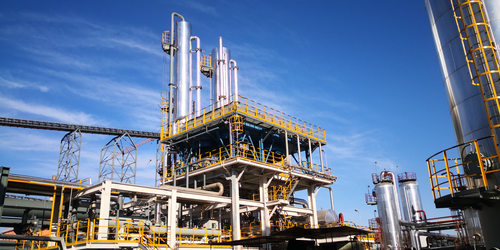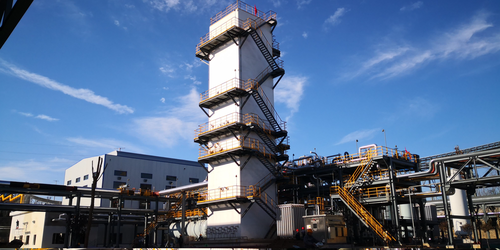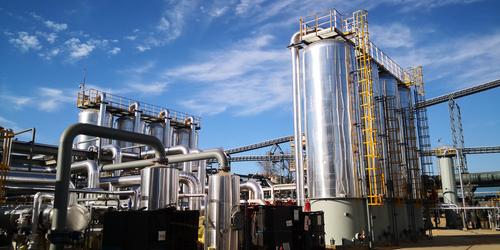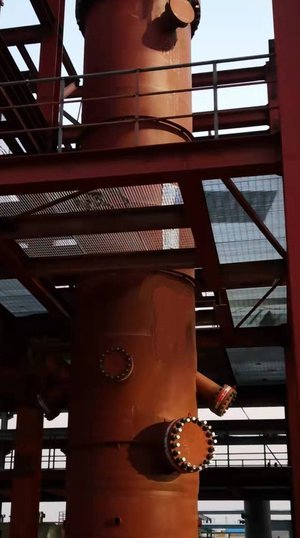CRI'S LARGEST CO₂-TO-METHANOL REACTOR INSTALLED IN ANYANG
A major milestone has been passed in CRI's commercial scale CO₂-to-methanol project, which is in progress in Anyang, Henan province, China. CRI's largest Emissions-to-Liquids (ETL) reactor system to date has now been installed. The reactor is based on CRI's proprietary technology, developed and first demonstrated in Iceland, and is the key piece of equipment needed to directly hydrogenate CO₂ to form methanol, a low-carbon intensity fuel and chemical building block.
The pressure vessel, which weighs in at over 80 metric tons (the equivalent of a fully loaded Boeing 737 passenger jet) was fabricated for CRI according to its detailed specifications in a specialized workshop and transported to the site in Anyang. It was carefully placed inside a previously erected steel frame structure on-site and will now be connected by pipes to other equipment, including a specialized gas compressor and distillation system.
The first phase of the project in Anyang is already in the commissioning phase. It involves the cleaning and separation of coke-oven gas, as well as capture of waste CO2. Hydrogen and CO₂ will be utilized by CRI's ETL system for the production of methanol, while methane will be monetized as liquified natural gas (LNG).
The ETL plant will be the largest CO₂-to-methanol plant in the world, with an annual production capacity of 110,000 tons (330 tons per day). The plant is built for the Shunli project company (majority owned by the Henan Shuncheng Group) who will own and operate the plant.
Pictures of the gas cleaning, separation and liquefaction equipment are shown below.
The next phase of the project will be the commissioning of the ETL plant, once all equipment has been installed and commissioning of the gas cleaning section is complete. CRI’s technical services team will then be travelling to Anyang to support the commissioning of the plant this summer.






